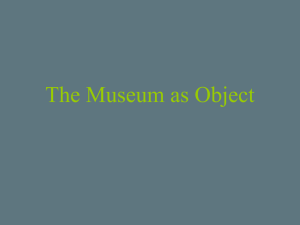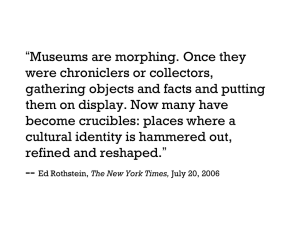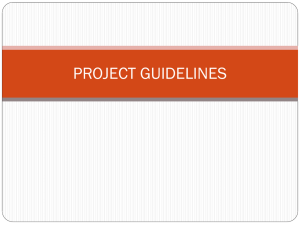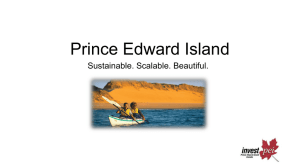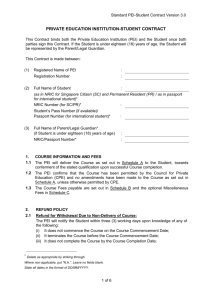- The Archi Blog
advertisement
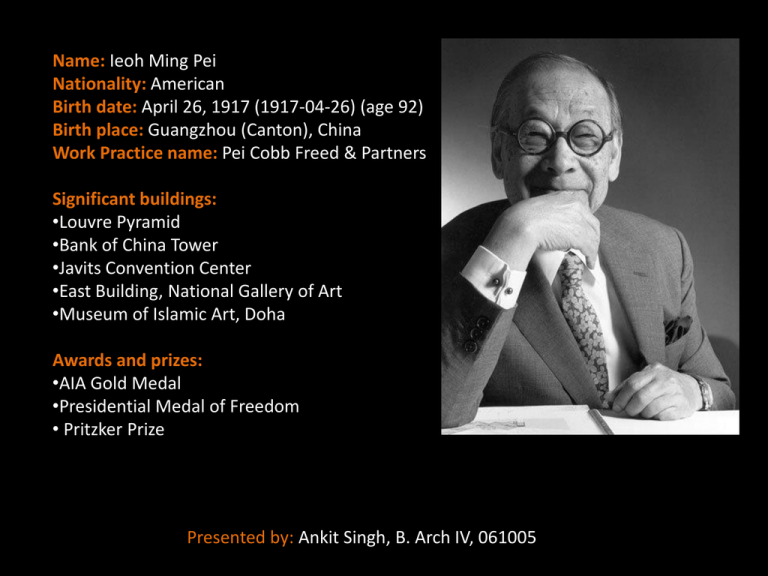
Name: Ieoh Ming Pei Nationality: American Birth date: April 26, 1917 (1917-04-26) (age 92) Birth place: Guangzhou (Canton), China Work Practice name: Pei Cobb Freed & Partners Significant buildings: •Louvre Pyramid •Bank of China Tower •Javits Convention Center •East Building, National Gallery of Art •Museum of Islamic Art, Doha Awards and prizes: •AIA Gold Medal •Presidential Medal of Freedom • Pritzker Prize Presented by: Ankit Singh, B. Arch IV, 061005 Philosophy •Although he is remembered for his buildings, I. M. Pei's greatest influence on the architectural world is his philosophy of design. Just as his designs integrate aesthetics with functionality, Pei himself epitomizes the resolution of both an artist and engineer. •He believed that the only issue of contemporary concern was life itself; buildings should be created as living spaces -- spaces of activity and thought – rather than static monuments. •An unusual dialogue between two very different and very important cultures: east and west. •Interplay between geometry and light •The relationship between site and building design •Due to his reliance on abstract form and materials such as stone, concrete, glass, and steel, Pei has been considered a disciple of Walter Gropius. •To the architectural world, Pei legacy is his belief that architecture "is the mirror of life itself." NATIONAL GALLERY OF ART- EAST WING NATIONAL GALLERY OF ART- EAST WING PROBLEM •The new building had to fit an irregularly shaped, trapezoidal site. •Harmonize with John Russell Pope's classicizing West Building. •Two different buildings were required: a museum to house large travelling exhibitions, and also a separate study-center / office facility . SOLUTION •The trapezoidal site was sliced into two triangles — one for each function — with a triangular atrium unifying the whole. •In plan, section and elevation, the interlocking volumes merge inseparably. NATIONAL GALLERY OF ART- EAST WING NATIONAL GALLERY OF ART- EAST WING •"H"-shaped façade matches the equally severe walls of the West Building. •To correspond in texture and color to the original building, the new one is faced inside and out with lavender-pink marble from the same quarry. •This structure interlocks complex, shifting triangular shapes. To emphasize these sharp angles, lighter stone was chosen for all the East Building's vertical corners. •The new and old buildings are functionally united into an integrated whole by an underground tunnel animated by prismatic skylights, and a waterwall. NATIONAL GALLERY OF ART- EAST WING •The sky lit atrium at the heart of the East Wing is a hub of circulation and orientation. •Organized around it are three flexible towers designed to permit the exhibition of one large or multiple small shows. •Adjacent to the public museum is the integral, Study Center, which, housed in a smaller triangle, provides a lightfilled reading room and library stacks, as well as offices for scholars, curators and administrators. LOVURE-PARIS •A grand entrance to the museum with a larger-than-life 70-foot glass pyramid surrounded by a triad of smaller pyramids and reflecting pools. •This new entrance, which connected a large underground reception area to the existing art galleries, was lauded internationally. •The concept behind the Pei Pyramids was, to create a modern space without taking away from the elegance of the existing structure. • The triangular geometry of the pyramid encompasses a small, unobtrusive volume, yet creates a distinct space that captures light and has surface identification. • Similarly, by using the Egyptian concept of the pyramids, the new structure would be both more ancient and more modern than the existing Louvre.





